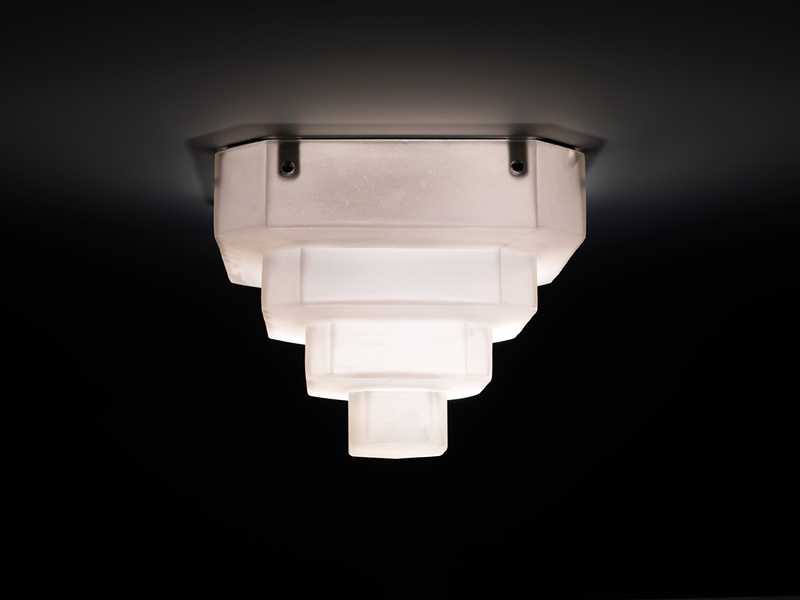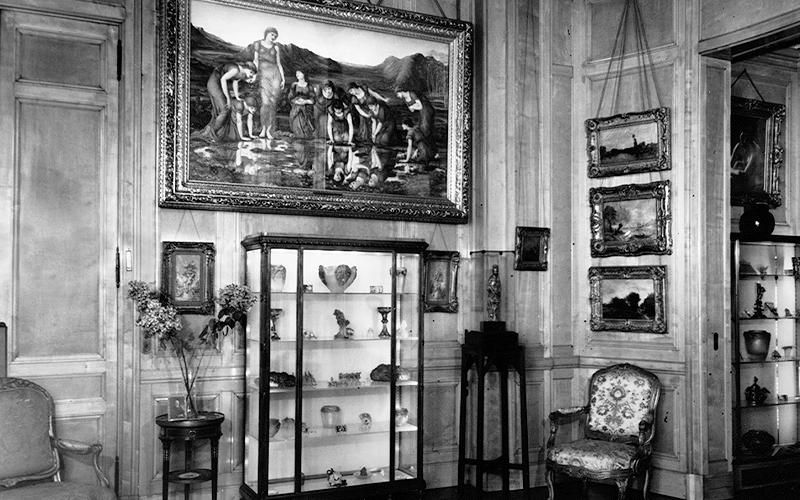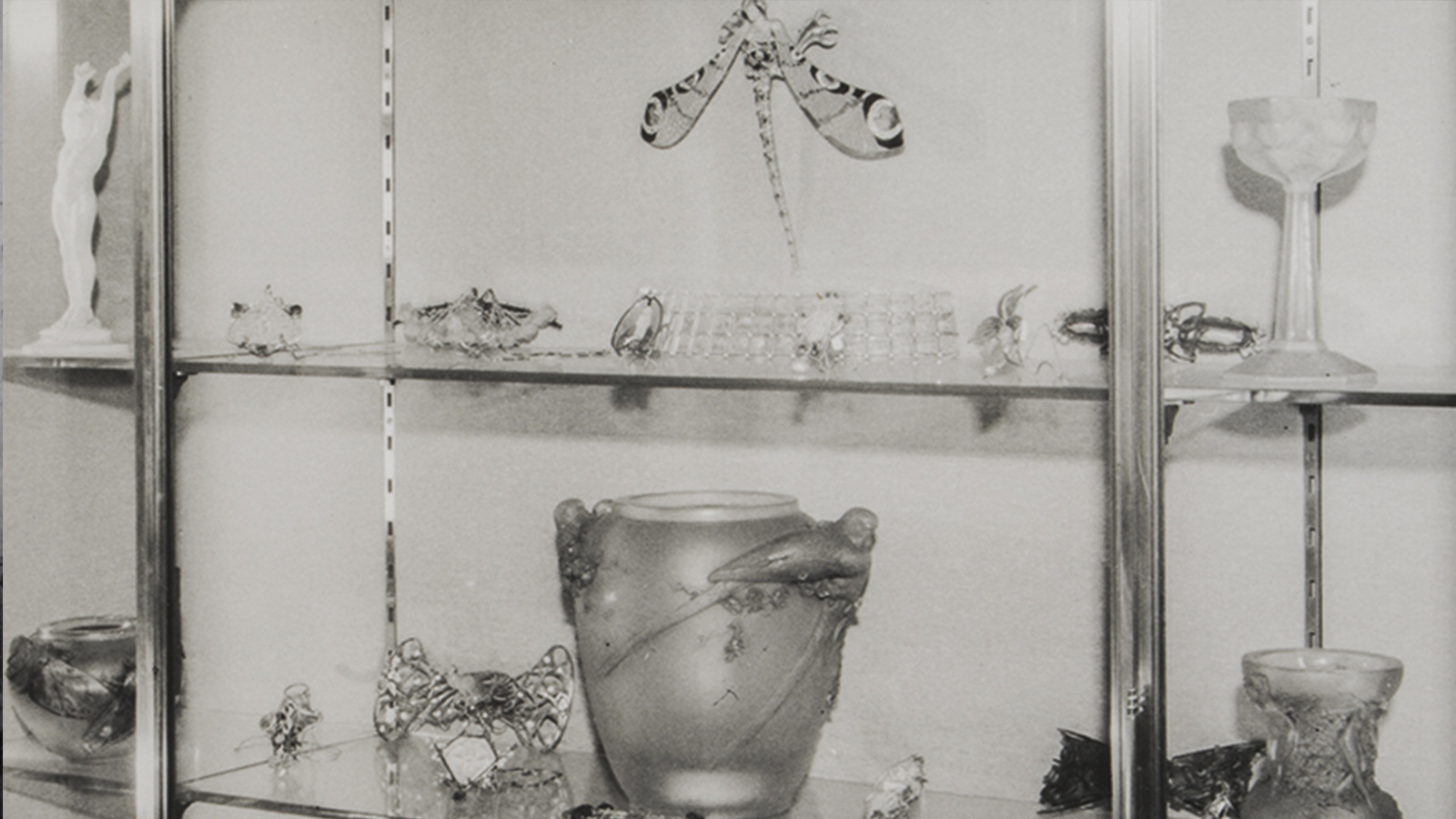Sophistication and functionality
The bathroom designed by René Lalique
The luxurious property underwent a number of interventions to make it suitable for housing Gulbenkian’s private collection and serving as a residence for the collector and his family. One of Calouste’s main concerns was the decoration, which was provided by several renowned artists including his longstanding friend, René Lalique.
The friendship between Lalique and Gulbenkian, who were introduced by the actress Sarah Bernhardt, began in the late 19th century. René Lalique (1860–1945), a contemporary of the collector, started working as a jeweller from a very young age and went on to become one of the most famous in Paris. In 1899, Gulbenkian acquired his first jewel directly from the artist – the Wooded Landscape choker plaque –, triggering a friendship between the two men that lasted for many years and culminated in a collection of hundreds of pieces, which remains one of the largest private collections of René Lalique’s work to this day. It was no surprise, then, that Gulbenkian also called on Lalique to help him redesign his home.


The collector regularly sought advice from the artist, as well as commissioning several interventions from him: designing his private bathroom was one of these commissions. In an Art Deco style with a vaulted ceiling decorated with silver tiles – which were also used on the floor –, the bathroom was clad in Chiampo Perla marble from Vicenza. Lalique also designed the plafonnier and the glass wall lamps, as well as the handles, soap holders and towel stands. Following Gulbenkian’s instructions, a 53-centimetre deep Porcher bathtub similar to the one in his quarters at the Ritz Hotel was ordered.

The different rooms at the hôtel Gulbenkian were decorated to suit the collector’s artistic tastes. In the room known as the Salon Sycomore, Gulbenkian exhibited glasswork, jewels and other objects by Lalique alongside the large painting The Mirror of Venus by Sir Edward Burne-Jones. The room also featured French furniture, small landscape paintings and other objects from the collection.
Collection of Stories
Where have the artworks been, before being acquired by Calouste Gulbenkian? Who were their authors and their protagonists? What curiosities do they hide? In this series, discover the various stories behind the Museum's collection.

